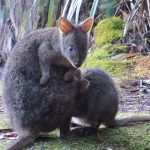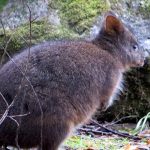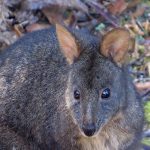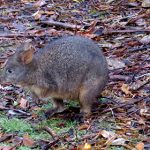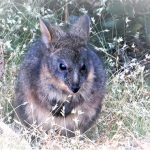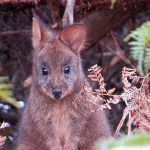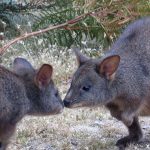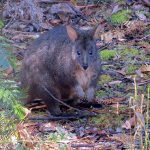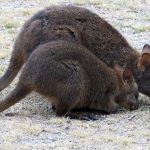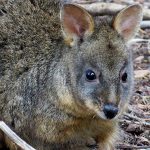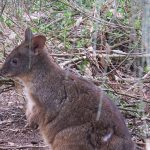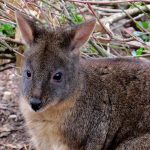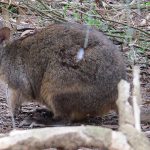TASMANIAN PADEMELON
The Tasmanian Pademelon: A Hidden Jewel of the Southern Wilds
Imagine a quiet Tasmanian forest as dusk settles. The air is cool and damp, the earthy scent of moss and leaf litter rising from the ground. Amidst the gentle rustle of undergrowth, a small, round-eyed creature emerges, its fur blending seamlessly with the shadows. This is the Tasmanian Pademelon, a marsupial whose story weaves through the heart of Tasmania’s wild places.
Physical Description
The Tasmanian Pademelon is a compact marsupial:
- Size: Adults measure about 60–70 cm from nose to tail tip.
- Weight: Typically between 4 and 12 kilograms.
- Appearance:
- Stocky build with short, sturdy limbs.
- Short, slightly tapering tail.
- Dense fur, dark brown to greyish-brown above, with a creamy, paler underside.
When you see a pademelon up close, their gentle faces and rounded bodies give an impression of perpetual alertness, every sense tuned to the forest’s subtle signals.
Habitat and Range
| Feature | Details |
|---|---|
| Endemic Region | Tasmania (including coastal and inland areas) |
| Habitat Types | Forests, woodlands, scrubland, grassy clearings |
These marsupials are true Tasmanian natives, found nowhere else on Earth. Their preferred environments offer thick vegetation for shelter and open patches for grazing.
Behaviour and Lifestyle
Nocturnal and Shy
- Active at Night: After sunset, pademelons venture out to feed, their movement almost silent on the soft forest floor.
- Solitary: Usually seen alone, though small groups may gather where food is plentiful.
- Sensory Adaptations: Highly developed hearing and sense of smell help them detect both food and danger.
Feeding Habits
Pademelons are herbivores, with a diet that includes:
- Grasses and herbs
- Leaves and shoots of shrubs
At night, you might hear the faint snapping of twigs as they nibble, or catch the subtle, sweet scent of crushed vegetation in their wake.
Life Cycle
- Reproduction: Females give birth after a brief gestation of around 30 days.
- Pouch Life: The tiny, underdeveloped joey climbs into the mother’s pouch, where it grows for about six months.
- Growth: Once strong enough, the joey will peek out and eventually explore the world, still returning to the pouch for safety and feeding.
Conservation and Threats
Despite their adaptability, pademelons face significant challenges:
- Habitat Loss & Fragmentation: Clearing of forests and bushland for agriculture and development.
- Road Mortality: Night-time feeding habits put them at risk of being struck by vehicles.
- Introduced Predators: Foxes, dogs, and cats are a constant threat.
Conservation Efforts
The Tasmanian Parks and Wildlife Service actively manages:
- National parks and reserves as safe havens.
- Public education programmes highlighting the importance of native species.
The Pademelon’s Place in Tasmania’s Story
To glimpse a Tasmanian Pademelon is to witness a living fragment of ancient Australia. Their quiet resilience echoes through Tasmania’s forests and meadows, connecting us to a world that is both fragile and wondrous.
Conservation isn’t just about survival—it’s about preserving the quiet beauty and delicate balance of these wild places, for future generations and for the pademelons themselves.
Quick Reference Table
| Feature | Description |
|---|---|
| Scientific Name | Thylogale billardierii |
| Average Length | 60–70 cm |
| Average Weight | 4–12 kg |
| Activity Pattern | Nocturnal |
| Diet | Herbivorous (grasses, herbs, shrubs) |
| Range | Tasmania (endemic) |
| Conservation Status | Not currently threatened, but facing pressures |
Final Thought
Next time you walk through a Tasmanian woodland at twilight, pause and listen. The soft rustle you hear might be a pademelon, a small but vital heartbeat in the living tapestry of Australia’s wild south. Protecting their home ensures the story of Tasmania’s forests continues—for them, and for us all.

